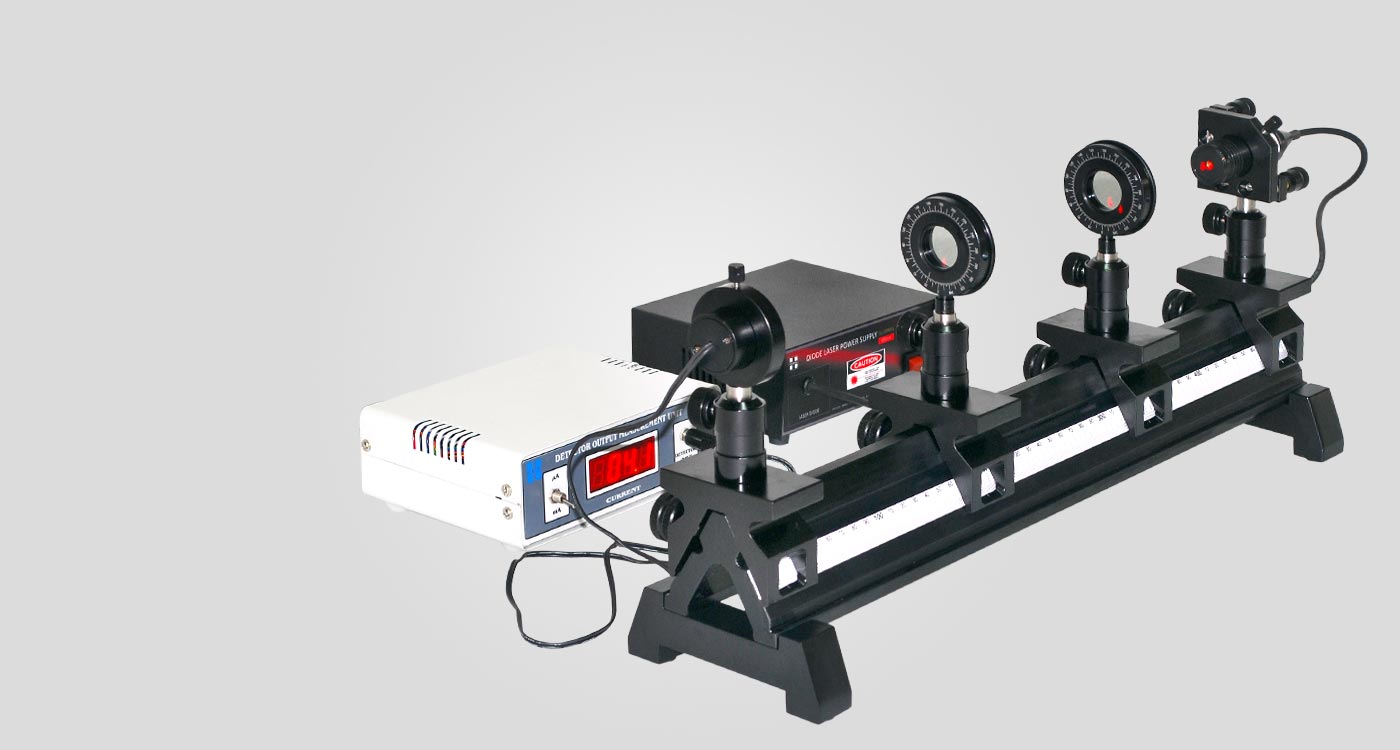Experimental Setup:
- Light Source: A laser or LED that emits unpolarized light.
- Polarizer: A polarizing filter that converts unpolarized light into linearly polarized light.
- Analyzer (Second Polarizer): Rotates to change the angle θ\theta.
- Light Detector (Photodiode or Lux Meter): Measures the transmitted light intensity.
- Protractor/Angular Scale: Used to measure the angle between the polarizer and analyzer.
Procedure:
- Align the polarizer and analyzer so they have the same transmission axis (θ=0∘\theta = 0^\circ). Record the intensity I0I_0.
- Rotate the analyzer in small increments (e.g., 10° each step) and record the intensity II at each angle.
- Plot a graph of II vs. cos2θ\cos^2 \theta. The data should form a straight line, verifying Malus’ Law.
Applications of Malus’ Law Experiment:
- Understanding Light Polarization: Demonstrates how light waves interact with polarizing materials.
- Optical Devices & LCD Screens: Used in sunglasses, LCD displays, and optical filters.
- Stress Analysis in Transparent Materials: Polarized light helps visualize internal stresses.
- Quantum Mechanics: Explores the behavior of photons in quantum optics experiments.



There are no reviews yet.